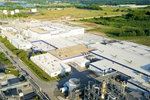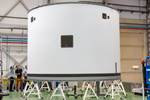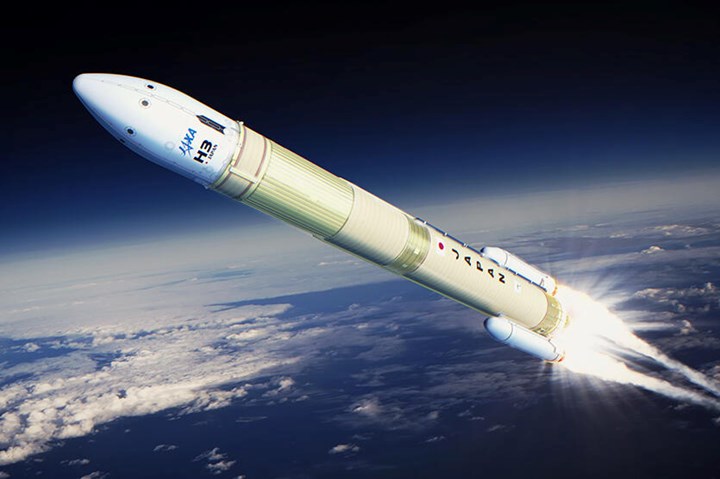Toray supplies Torayca carbon fiber, prepreg for H3 launch vehicle
Set to launch Feb. 15, the Japan Aerospace Exploration Agency rocket has been designed with a composite motor case and payload fairing section.
Toray Industries (Tokyo, Japan) announces that it has supplied the Japan Aerospace Exploration Agency’s (JAXA, Tokyo) H3 launch vehicle — the successor to its H-IIA rocket — with Torayca carbon fiber and prepreg. As it was used in H-IIA, the carbon fiber has been implemented in the H3 motor case (the part of the rocket body that stores solid fuel and serves as the combustion chamber) and Torayca prepreg, designed using high-strength carbon fiber and high-toughness resin, has been newly adopted for the payload fairing section (the leading edge of the launch vehicle where satellites and other payloads are loaded).
The H3 is JAXA’s new flagship launch vehicle aiming at achieving high flexibility, high reliability and high cost performance. The rocket is 63 meters high with a diameter of 5.2 meters. According to the JAXA specifications page, the rocket is “capable of delivering ‘4 tons or more’ to a 310-mile-high (500 kilometers) sun-synchronous orbit and ‘6.5 tons or more’ to geostationary transfer orbit. JAXA has planned the H3’s launch for Feb. 15, 2023.
Torayca prepreg, used in fairings, is a slit tape prepreg designed for the automated fiber placement (AFP) process, enabling efficient forming and processing of complex shapes and large structural materials, including oven forming, in addition to conventional autoclave forming.
In recent years, Toray notes that the use of satellites has expanded in various fields such as broadcasting, communications, positioning (GPS), Earth observation and disaster prevention, and the demand for launch vehicles has been increasing year by year. With the demand for lower launch costs and higher performance, the use of composite materials is expected to expand further in the future. Toray will continue to support such demand with Torayca products.
Related Content
-
DLR completes MFFD upper shell skin layup
Eight-meter-long CFRTP fuselage skin was achieved via laser-heated in-situ consolidation, with stringers, frames and cleats to be welded.
-
Plant tour: Renegade Materials Corp., Miamisburg, Ohio, U.S.
Renegade Materials is known for high-performance prepregs for aerospace applications. Following its acquisition by Teijin in 2019, the company has expanded capacity and R&D efforts on a range of aerospace-targeted materials.
-
Teijin lightweight materials enable VAIO portable displays
Teijin's Tenax TPCL and Panlite Sheet materials allow for the creation of complex, three-dimensional shapes in a single molding step.














